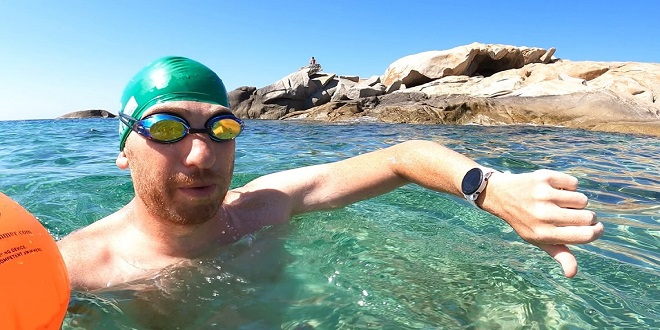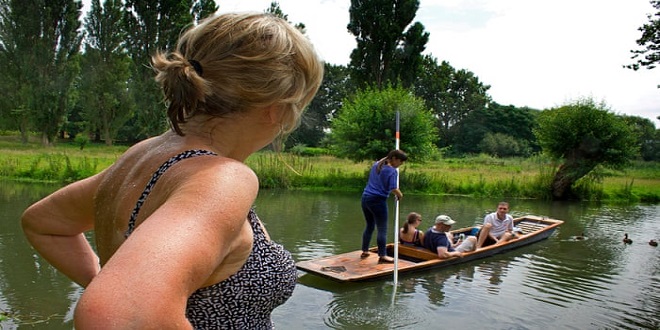The most important swimming receiver held in England

Just one woman took part
The Mirror devoted its front page to a pictorial coverage of the event, showing Smith, appropriately ‘wrapped in sackcloth’ waiting for the race to start, Richmond Bridge packed with spectators, and the Thames full of men thrashing about in the water. In 1908 Smith again took part, as a member of the Ladies Perseverance Club, at a time when many of the Mirror’s pictorial features were now focused on suffragettes being released from Holloway Prison. While the first Woman’s Suffrage Bill had been presented to the House of Commons back in 1832, the fight for the right to vote had now become militant. In 1907 the Women’s Freedom League had been formed and the year of Smith’s swim there was a mass suffragette rally in London, while the following year the first hunger strikes started.
The 1908 Richmond swimming race doesn’t appear to have been segregated, although the winners were, as in this case Smith came second, with the ‘lady’ winner I.B. Armstrong of the Kingston Ladies Club. Overall, fifty-seven people started the race, only eighteen finished (of which, it appears, six were women), and Jarvis won the men’s race, fighting off competitors from Holland, Belgium, and France.
As with her successors Eileen Lee and Ivy Hawke, Smith was an established long-distance swimmer; that same year she swam sixteen miles in the Channel, and a photograph from around 1910 shows her next to Lee’s trainer, Walter Brickett. She won the ‘ladies half-mile championship in the Thames’ for three years from 1907 (the location isn’t stated) and was also a noted water polo player. In 1911 she attempted a round trip of the Silent, but hit a submerged barrel on the way back, and, such as the loss of blood, she had to stop.
Twaddle about the weaker
Set her sights once more on the Channel, she was ‘London’s best-known lady swimmer’. The daughter of the superintendent of the City Fire Station and the Thames fire floats, she’d now swum twenty miles from Dover to Ramsgate. Nineteen twelve was the year women swimmers and divers first competed in the Olympics, and it also marked the launch of a window-smashing.
The physical equal of men, ’ she said. ‘I am going to put a stop forever to all this twaddle about the weaker sex. Yes, I am a firm believer in woman suffrage.’ This must have been a daring statement to make, for the idea of women’s suffrage was threatening the very foundation of ‘civilization’. MPs had been warning for years that it simply wasn’t fitting for women to enter the arena of politics or engage in public affairs; their proper sphere was the home. During debates in the all-male House of Commons in 1912, some said it was ridiculous to regard women as a sort of china doll in a sacred hearth’, but others saw the vote as a badge of difference, a ‘difference of masculine character and coercive power’ which was necessary for the safeguarding of empire.
Magazines generate revenue through various advertising revenue models and subscription models. Publishers rely on advertising to sustain their business, as ads provide a significant portion of the revenue. By partnering with advertisers, magazines create opportunities for them to showcase their products or services to the target audience. These strategic partnerships enable advertisers to reach a larger customer base and increase brand visibility.
Summary
The mental equilibrium of the female sex was not as stable as that of the male; they tended to hysteria, an argument that was seen to have full scientific backing. It was ‘not cricket’ for women to use force as the suffragettes were doing: would we end up with ‘masculine women’? If, as many believed, men were superior mentally and physically, how startling it must have been when Lily Smith entered the male sporting arena – and swam alongside men in the River Thames from Richmond to Blackfriars.




